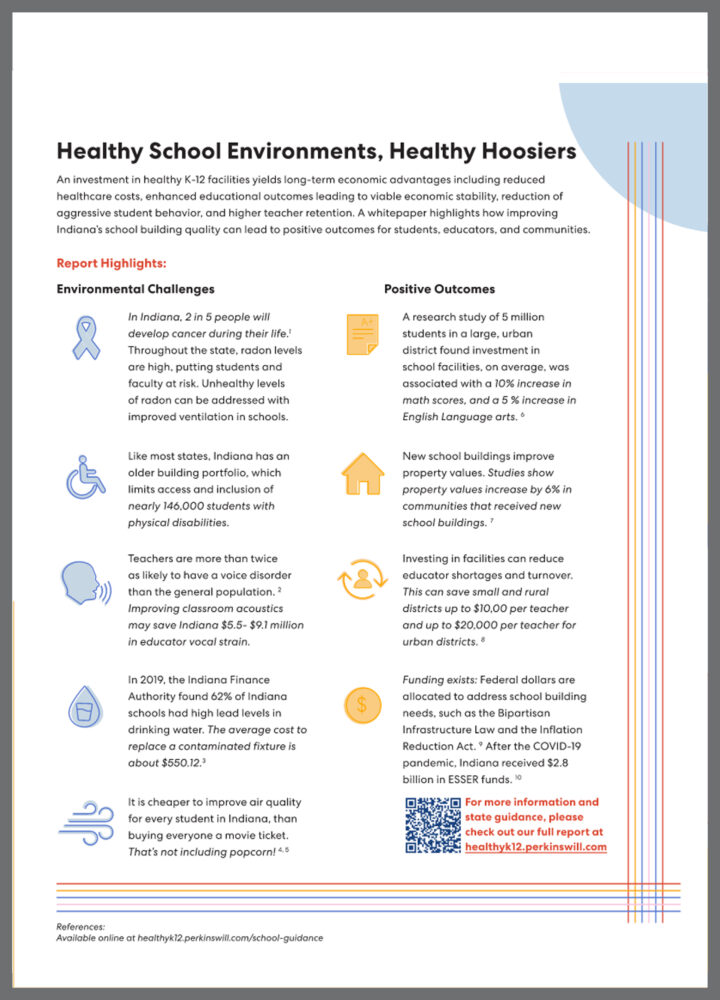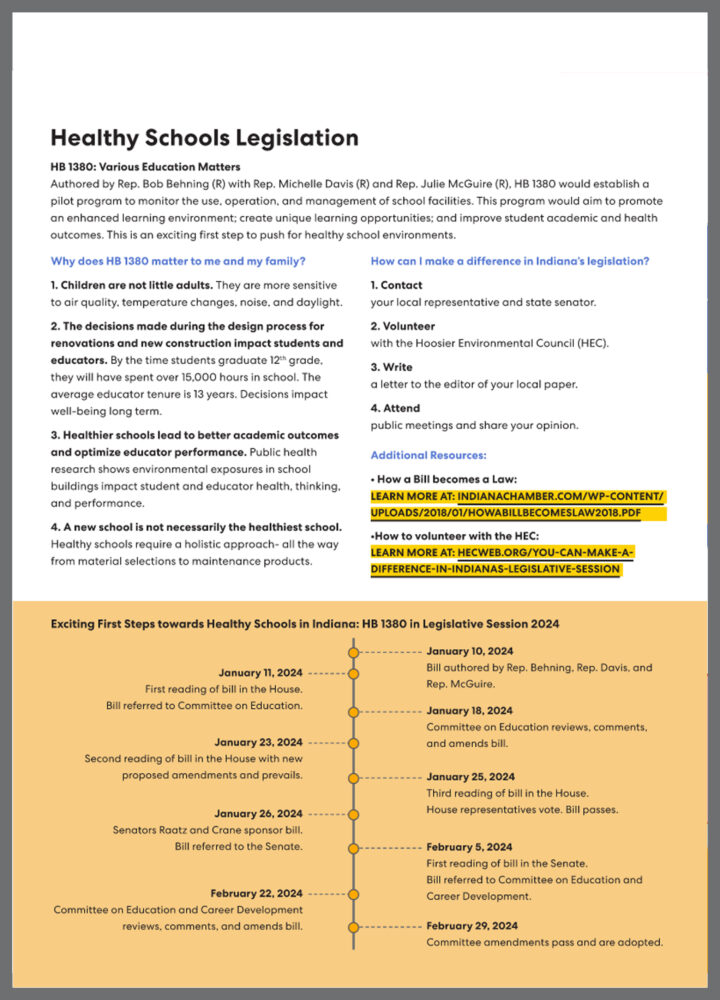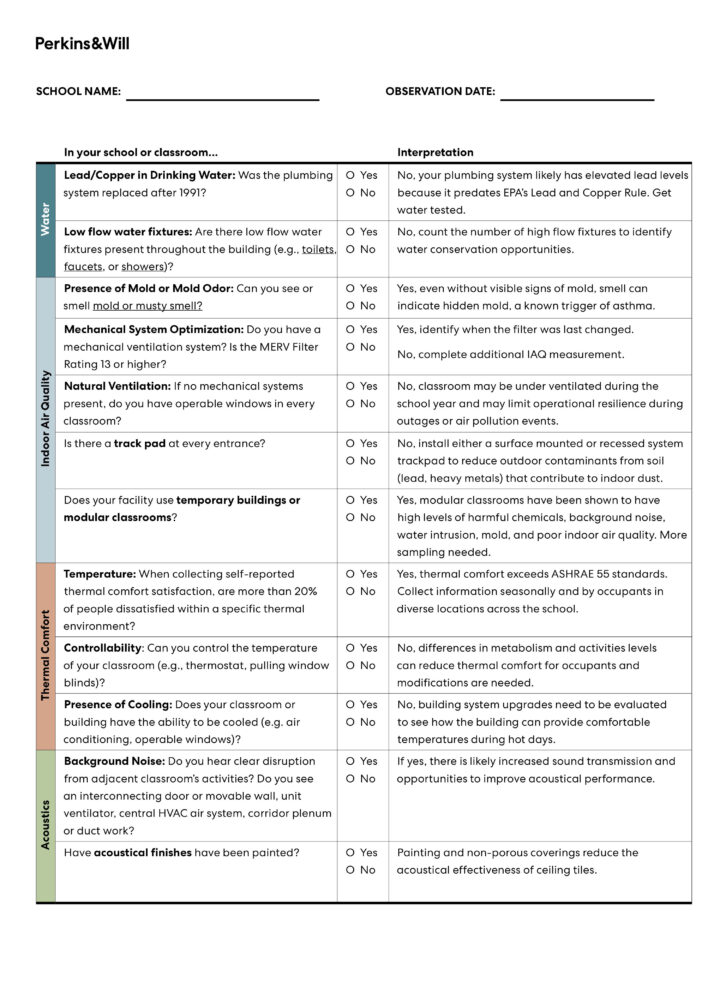School Guidance: Strategies in Action
Read on to see how school districts around the world are creating healthy learning environments.
↓

― Indiana Public Schools
Healthy School Environments, Healthy Hoosiers
K-12 schools stand as crucial pillars within our communities, serving as vital assets that not only educate and nourish our children but also serve as hubs for social interaction and employment, touching the lives of millions of Indiana residents daily. Astonishingly, Hoosier children spend approximately 15,000 hours of their formative years within the walls of K-12 schools, emphasizing the significant role these institutions play in shaping their physical and academic development. As key community anchors, educators deserve not only our gratitude but healthy workplace environments, recognizing its profound impact on performance, retention, healthcare costs, and absenteeism.
― Indiana Public Schools
Fast Facts: Indiana Healthy Schools
Want to share our whitepaper with busy friends, family, and colleagues? Download our one pager for some fast facts about healthy school environments and chronic absenteeism in Indiana.


― Indiana Public Schools
Indiana Healthy Schools Legislation
House Bill 1380: Various Education Matters, authored by Rep. Bob Behning would establish a pilot program to monitor the use, operation, and management of school facilities. This is an exciting first step! Learn more about this effort and other Indiana-related facts to push for healthy school environments.
― Massachusetts School Building Authority
Measuring Energy and Health in Existing Massachusetts Schools
This document lays out a roadmap for implementing Session Act 2022, Chapter 179, SECTION 83 by December 31, 2024. This paper represents insights from diverse fields including architecture, public health, and engineering. Child learning environments require special consideration due to students’ rapid biological, cognitive, academic, and social growth, and less mature immune systems. The current public school building portfolio is geographically diverse and spans decades of construction practices, demographic, environmental, and economic pressures. This document discusses the significance and methodologies for collecting the environmental determinants of health and energy metrics in SECTION 83. To properly identify building optimization strategies for energy and health, systematic data needs to be collected to inform decision-making.


― Your School!
Subjective & Observational Assessment
Subjective, or self-reported data may come from students, staff, facilities, or educators. Their lived experience is easier to access and does not require a hired professional who may be unfamiliar with the building. This snapshot can provide an initial understanding of the school facility and identify areas requiring further evaluation.
We recommend downloading this checklist for your own school to gain a better understanding of of potential facility challenges and health concerns.
The guidance provided on this site is based on the available information as of the date of publication and does not replace federal, state, or local public health recommendations but aggregates best practices and innovative solutions at the intersection of buildings and school health. We encourage schools to reach out and seek expert advice on their unique circumstances.

